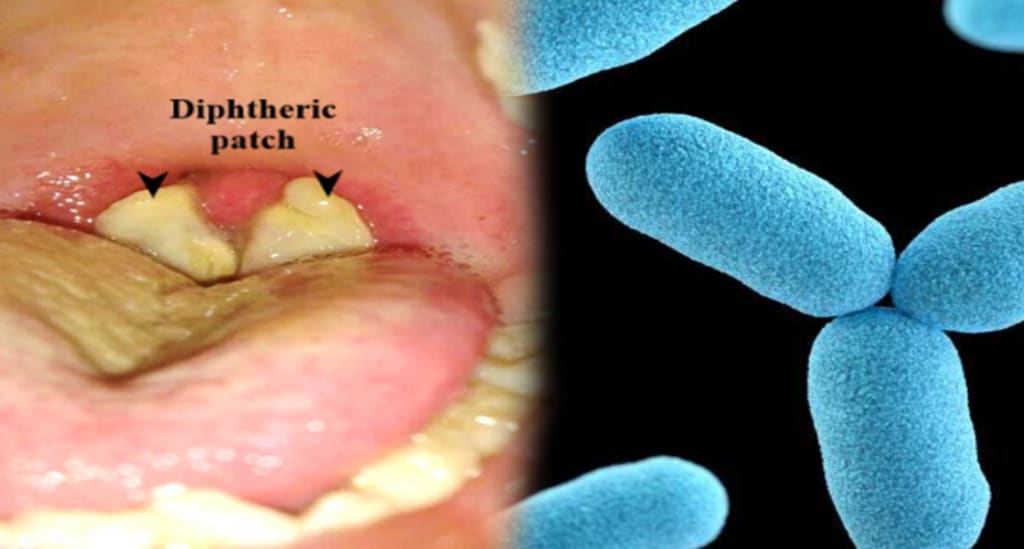Death: Osun residents alerted on Diphtheria disease outbreak
Lessons learned

Dr. Oluwole Fabiyi, Executive Secretary of the Osun State Primary Healthcare Development Board (OSPHCDB), has urged parents/caregivers to ensure that their children receive the anti-diphtheria vaccination as indicated in the childhood immunization schedule.
The warning comes in the wake of a diphtheria outbreak in Osun and other parts of the country. It was gathered that a boy later died as a result of the infection.
Diphtheria, a vaccine-preventable disease, is a dangerous bacterial infection that affects a person's nose, throat, and skin, according to Fabiyi.
"Diphtheria spreads easily between people through droplets from coughing or sneezing, direct contact with infected people, or contact with contaminated clothing and objects," he noted, emphasizing the significance of hygiene and environmental sanitation in prevention.Fever, runny nose, sore throat, cough, red eyes, neck swelling, and, in extreme cases, a sheet of thick, grey substance covering the back of the throat, making breathing difficult.
"A six-year-old child in Osogbo has died as a result of a Diphtheria outbreak."Following an epidemic of Diphtheria illnesses in several parts of Osun State, Governor Ademola Adeleke has ordered the urgent activation of the State Emergency Response Centre to prevent further spread, conduct contact tracing, and treat afflicted individuals.
"Nursing mothers were also advised to complete routine schedules for their children by going to the primary healthcare facilities close to them.
On the suspected cases reported, 111 (42.1%) were confirmed (8 lab confirmed & 103 clinically compatible), 18 (7.1%) were discarded, 40 (15.3%) are pending classification while 84 (33.2%) were unknown. Majority (91.9%) of the confirmed cases occurred in the 2 – 14 years age group. Also, a total of 22 deaths (CFR = 19.8%) were recorded among confirmed cases. Only 12 (10.8%) out of 111 confirmed cases were fully vaccinated with a diphtheria toxin-containing vaccine (DAT). This indicated that most of the affected persons with Diphtheria were not fully vaccinated with DAT.
• First week of March, ProMed, reported a total of 89 deaths recorded among all 733 suspected cases. Representing a case fatality rate of 12.3%. Out of the suspected cases, 313 cases were confirmed in the reports received in the first week of March 2023. Children aged 2-14 years account for 85.2% of confirmed cases. This shows an increase in deaths from 22 deaths first reported in January 2023 to 89 deaths in march 2023, hence the cases and mortality rate of diphtheria keeps increasing in Nigeria.
The outbreak has clearly been deteriorating and from technical analysis, this outbreak is the worst since a decade and may escalate again quickly. Especially with below described context including low testing, low and very low vaccination coverage in many states, suspected unreported cases, high level of transmission risk in current affected areas.
• 20 states are reported cases and the most affected states include Kano (533, 74%), Yobe (86, 12%), Katsina (45, 6%), Sokoto (14, 2%) and Enugu (9, 1%).
• Only 43.2% of confirmed cases were fully vaccinated with a vaccine containing diphtheria toxin. This indicates that vaccination is important in the protection of diphtheria. Among the confirmed cases, only 10% of confirmed cases were reported vaccinated by end of January.
• The outbreak evolution seems to be a result of low vaccination. Based on latest information of NCDC, only 27 (12.5%) out of the confirmed cases were fully vaccinated with a diphtheria toxin-containing vaccine.
• Lack of testing capacity, low testing and accessibility challenges are factors which likely contribute to undermine the level of the disease.
• Osun and Lagos state having high cases of zero dose children. The same population being at high risk of diphtheria. Due to insufficient testing equipment in country, the cases for Diphtheria are not diagnosed on time and reported comprehensively. This means that the response team are not updated regularly on the suspected and confirmed cases of Diphtheria. For example, NCDC has indicated at EOC meetings that they are facing challenges with availability of testing kits such as Extraction kits for diagnostics purposes. Many PCR and sample results returned inconclusive, causing more delay in testing, and publishing of epidemiological results. To note, according to the NCDC, many staff have not received adequate training on how to test for Diphtheria.
Zamfara State officially requested assistance from NRCS and NCDC which is currently working in Diphtheria response has shared the challenges and gaps where support is needed. All integrated to the need analysis and requiring community based actions to improve prevention, current immunization scaled-up.
Previous Operations
Has a similar event affected the same area(s) in the last
3 years? No
Did it affect the same population groups? No
Did the National Society respond? No
Did the National Society request funding from DREF for that event(s)? No
If yes, please specify which operations -
Lessons learned
To accommodate the needs of the state branch at the local level, the planning phase has gathered the expressed needs from the various branches involved to determine the operational needs of each of the local branch, and to encourage the inclusion of state branches in the development and execution of the project. Nigerian Red Cross Society (NRCS) has also built an operational strategy that is optimal and very precise to the outbreak response priority and needs are aligned with the request of each states local authorities.
IFRC Delegation engaged high management of NRCS to ensure delays in processing signature of the agreement is not experienced and the disbursement of funds to the National Society does not experience delays.
Frequent trainings on Epidemic control is highly required for state branch to increase their level of preparedness for emergency response and prevent further operational problems.
Furthermore, changes and updates in epidemiological data and trends will play an important role in the operational priorities and inform any changes in operational needs and plans. Therefore, a strong monitoring and reporting system is integrated to this response and will be set-up as from onset of the response. Community-based volunteers and staff at the branch must continue to receive training and information on any updates on situational reports and data.






Comments
There are no comments for this story
Be the first to respond and start the conversation.